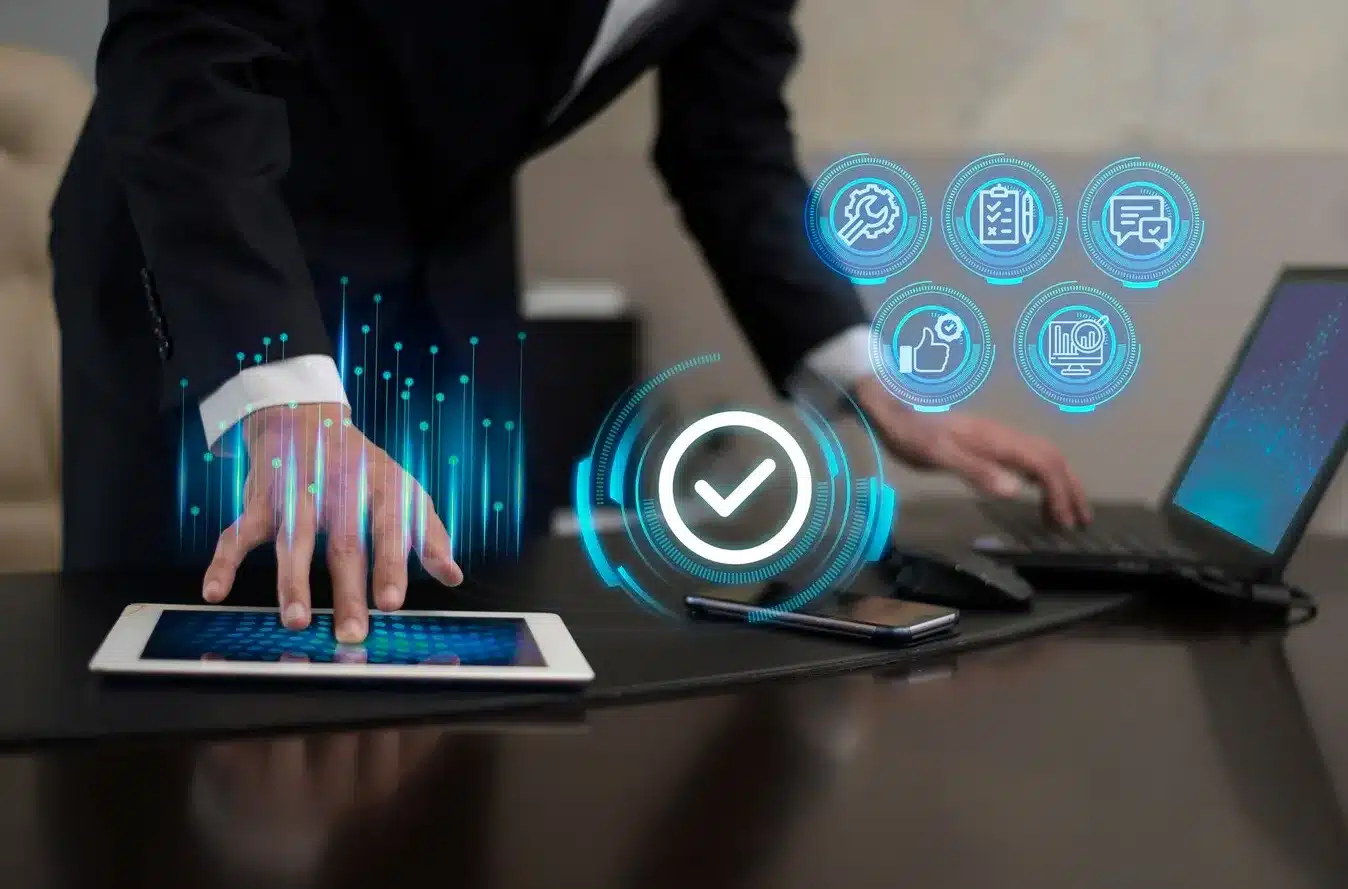At first sight, IT procurement may seem like a repelling term. At the same time, it may serve as an addition to our daily activity: the selection and purchase of appropriate technologies that will best suit our needs. This is very critical to the entrepreneur, IT professional, and basically to any person who is concerned about the mechanics of how to acquire technology and the need to make informed choices. That is to assist in the selection, evaluation, and acquisition of information technology tools and systems suitable for efficient and effective running of your business.
We aim to clarify and simplify the IT procurement process for you. Our guidance walks you from recognizing what actually your technological needs are to finally ensuring that what is given against your demand is the best value for your money. That is what we try to make clear in this article: We focus on giving a clear and systematic way for you to make informed decisions about the technology choices that you can make, enabling an improvement of the operational efficiency of your organization while avoiding technical jargon and complexities.
Table of Contents
What is IT Procurement?
IT procurement is the comprehensive process that organizations employ to acquire and implement information technology in alignment with their strategic goals. This crucial function encompasses a range of practices, from ad-hoc purchasing to meticulously strategic acquisitions, aimed at identifying the business’s IT needs, selecting the right technological solutions, and managing the acquisition process. Whether it’s for groundbreaking new initiatives or essential updates to existing systems, IT procurement is about ensuring that every technology investment—from software and hardware to IT services—resonates with the organization’s objectives, enhancing the overall efficiency and effectiveness of the technology infrastructure.
IT category managers play a pivotal role in this, overseeing both tactical and strategic purchases to build a technology stack that is not just robust but also seamlessly integrated with the business’s core functions. While the procurement landscape is dotted with industry-specific terminologies and acronyms, understanding these nuances is critical to navigating the IT procurement process effectively, ensuring every technology purchase, big or small, is a step towards achieving the organization’s strategic vision.
Why IT Procurement?
IT procurement goes much further than the mere act of buying IT products and services. In fact, it is essential to participate in the accomplishment of strategic and operational goals. The significant influence of IT on business success and business transformation makes the procurement process more than a transaction but rather a strategic function with an overview of organizational goals.
Involving key stakeholders from business, finance, and IT is essential in this process. It’s about understanding how IT can bolster business aims and executing investment decisions that bring the most value. It ensures that every IT acquisition is a step forward in the organization’s journey toward its objectives.
How to start an IT procurement

Most of the IT procurement process seems to be quite similar to other strategic sourcing processes. Commonly, the process begins with the buyer, who starts gathering data and estimating the potential vendors with the document called a request for proposal (RFP). Well, sometimes, in most cases, it depends on the specific requirements of the situation. Another type of RFX would be more appropriate.
An organization faced with a challenge but lacking the clarity to find solutions should, for instance, request information (RFI) and get what it needs. An RFQ would be a suitable approach, but only if there was a need to find an IT consultant for one of these projects.
In other cases, though, where the procurement will be more specific, like procuring a set of new laptops with the exact specifications needed, then issuing an RFQ will already suffice.
The procurement journey involves three primary steps: firstly, pinpointing and understanding the requirement; secondly, sending out a request for vendor information; and thirdly, choosing a vendor and proceeding with the purchase. While there are additional steps, such as evaluating vendor risks and assessing vendor performance post-contract to ensure optimal return on investment, this overview focuses on the foundational stages of the IT sourcing process.
Crafting and Researching RFPs
When a marketing stakeholder reaches out to procurement with a requirement for a new collaboration tool, IT procurement begins with groundwork rather than immediately launching an RFP or making a purchase. This preparatory phase typically involves:
- We are conducting interviews with stakeholders to pinpoint and comprehend the specific needs.
- We are reviewing the existing technology infrastructure to determine if a current tool can meet the requirement.
- We are undertaking market research to define the project’s scope and spot potential vendors.
- We are crafting an RFP that outlines the project’s background, scope, technical specifications, and questions for the RFP.
Distribution and Oversight of the RFP
Having determined the project scope and crafted a comprehensive RFP for the marketing team’s collaboration solution, you now move on to issuing and overseeing the RFP through the following steps:
- Compile a list of potential vendors and distribute the RFP to them.
- Collect any subsequent questions or requests for more information from the vendors.
- Respond to vendor inquiries, offering necessary context and clarification.
- Keep track of the responses and send out reminders to ensure adherence to the RFP timeline.
Assessing, Rating, and Choosing Vendors
You’re nearing the finish line now. Ideally, you’ve received at least three proposals from capable vendors. To choose the appropriate vendor, proceed with the following steps:
- Examine the proposals to ensure they meet the essential criteria.
- Involve stakeholders to evaluate the proposals based on functionality, customer success, and implementation.
- Assign Subject Matter Experts (SMEs) from the IT department to assess the technical specifications and integration capabilities.
- Apply weighted scores to highlight the criteria most critical to your decision-making process.
- Analyze the scores to determine if one vendor stands out as the clear choice.
- If a vendor distinctly meets your criteria, advance to the negotiation and contracting phase.
- If there’s no definitive front-runner, narrow down to a few finalists and ask for more detailed information, demonstrations, or presentations to make an informed decision.
3 critical tips for successful technology procurement

Set Benchmarks Prior to Acquisition
Understanding the return on investment (ROI) is pivotal in grasping the actual value of your IT procurement efforts. To accurately gauge this, it’s essential to benchmark the current state of affairs before implementing any new solution. This involves comprehensively assessing how the new solution will affect your team and determining the metrics for success. By establishing clear benchmarks prior to the purchase, you set a baseline against which the impact and effectiveness of the IT solution can be measured, ensuring you have tangible metrics to evaluate post-implementation performance.
Leverage Technology in the RFP Procedure
IT procurement is so complex that even its quantitative and qualitative aspects should be considered well if they are to be efficient. Trying to cover this with traditional methods, including Word documents, spreadsheets, and emails, will become a waste of time due to inefficiencies. Management, in general, and RFP mainly, consumes a lot of time. Centrally located, it streamlines the whole process with automation. Such technologies may help improve response evaluation accuracy and objectivity while, in some cases, reducing the RFP timeline by up to 50%. Essentially, this is the shift in technology that changes the RFP process from a ponderous and sclerotic mechanism into a nimble and responsive one, allowing quicker decision-making by virtue of better information.
Focus on Integration and Data Management
The rapid pace of technological advancement has left an indelible mark across all sectors, influencing virtually every department in numerous industries. This relentless progression underscores the growing importance of seamless integration and robust data management within IT procurement. In an era where technology is deeply interwoven into the fabric of business operations, ensuring that new IT solutions can integrate smoothly with existing systems is crucial. Moreover, the ability to effectively capture and harness data can transform isolated information into a potent strategic asset. Organizations that prioritize integrated solutions and data coherence are more likely to unlock valuable insights, fostering a more dynamic, data-driven approach to business strategy and operations.
Careers in IT Procurement

Roles in IT procurement typically fall under the broader umbrella of the procurement department but can also be situated within the IT department. Individuals in this field generally possess skills akin to those of procurement managers, with job titles such as IT procurement manager, IT procurement specialist, and technology procurement analyst.
The realm of IT procurement is laden with intricate considerations. Beyond assessing functionality and user experience, professionals must grasp how potential solutions will interact with the organization’s data and systems.
Hence, individuals with a blend of technological insight and procurement acumen excel in these roles.
Key Responsibilities and Skills for IT Procurement Managers:
- Conducting thorough market research.
- Engaging in procurement negotiations.
- Managing contracts effectively.
- Building and maintaining supplier relationships.
- Evaluating data security and identifying potential risks.
- Conducting stakeholder discovery and defining project scope.
- Demonstrating expertise in systems integration.
The importance of IT procurement
In today’s digital landscape, a typical business department utilizes between 40 and 60 applications, while an organization as a whole might deploy around 200 applications. This underscores that hardware and software expenditures are significant for most businesses. Yet, achieving spending visibility in IT remains a formidable challenge.
The ease of accessing various solutions has led to the prevalence of rogue IT—technology used without the IT department’s approval. This issue often accompanies maverick spending, where unmonitored IT expenditures can introduce significant risks to an organization, including unauthorized integrations, operational inefficiencies, data silos, or even security breaches.
Moreover, the absence of rigorous IT procurement processes can result in low software adoption rates or, worse, lead to investments in completely underutilized software. This is not a minor issue; studies show that about 37 percent of software remains unused, translating to a substantial financial drain estimated at $259 per employee annually.
Thus, emphasizing the importance of structured IT procurement is not just about cost-saving; it’s about fortifying the organization’s operational integrity, ensuring that every technology investment is deliberate, vetted, and aligned with the company’s strategic objectives.
Frequently Asked Questions
How does IT contribute to procurement?
It enhances procurement by offering tools for resource access and tracking bid and contract-related information. It facilitates improved communication within an organization and with external vendors, streamlining procurement operations.
What entails the IT system procurement process?
This process includes determining requirements, assessing vendors, and choosing hardware, software, and services to boost operational efficiency. A thorough approach to technology procurement assesses factors like vendor reputation, total cost beyond initial purchase, compatibility with current systems, scalability, and adaptability.
What should be considered in IT procurement?
The process of IT procurement spans the selection, purchase, and deployment of strategic hardware, software, and services that are key to ensuring the organization can achieve its mission most effectively. It is a critical process of assuring the company’s line of investment in technology with its overall goals and strategies.
What does procurement management mean in IT?
Referred to as the source-to-settle process, procurement management covers evaluating and selecting vendors, forming contractual agreements, and maintaining supplier relationships. It’s a multifaceted field that includes various interconnected tasks.
How are IT and procurement interconnected?
IT and procurement address departmental needs within an organization—procurement acquires necessary technology, equipment, and supplies, while IT integrates these resources into the existing system, ensuring seamless operation across departments.
